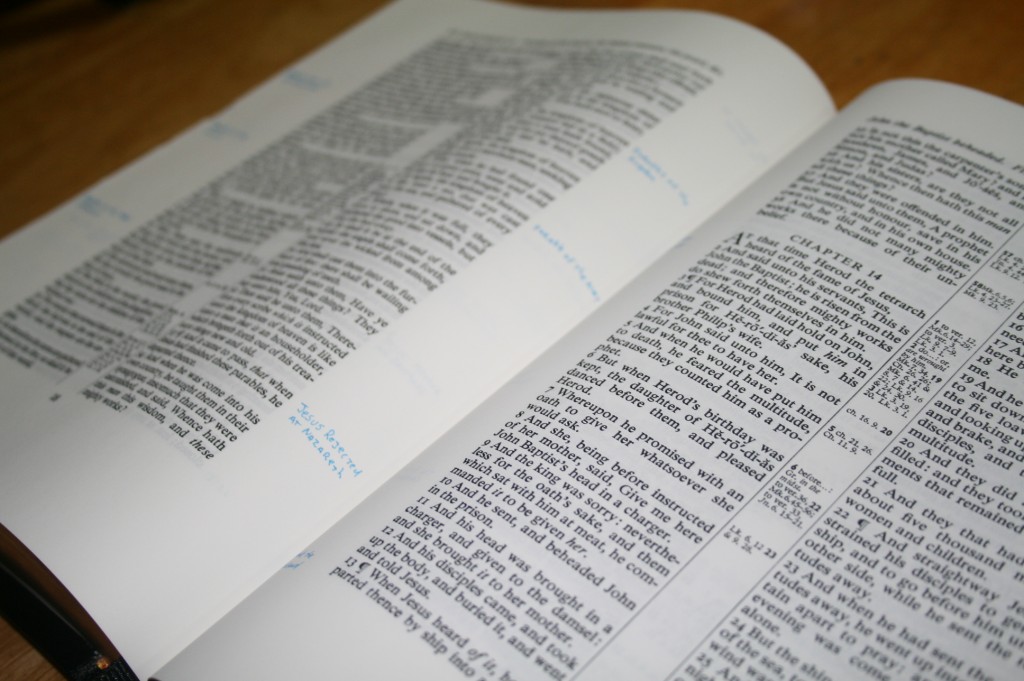Many Bibles, especially study Bibles, have headings within the text. Headings usually do a great job of summarizing the text in just a sentence. The headings can be very informative and can make the text easier to read by breaking the text into sections. Headings are especially helpful for scanning the page for a certain event or topic. If you have a Bible with wide enough margins, you can add your own custom headings.
There are many types of headings: some more theological, others more informative, some include references, some have many headings, and others have very few. Some are distracting when reading, while others are barely even noticeable.
Some may laugh at the idea of writing headings in the margins of a wide-margin Bible, feeling that we’re just making our Bibles the same as other study Bibles, or that the headings are not helpful. I suggest that making your own headings is a great way to delve into the text- pulling out the main points of each passage. It helps in study because you are thinking deeply about a passage to determine how best to describe it in just one sentence. Headings are also a great searching tool. If I’m looking for a certain miracle that Jesus performed, I can read down the margins (at the blue writing in my Concord) until I find the passage I’m looking for.
One of my favorite heading-systems is from the Thompson Chain Reference. Its headings are in the margins with the chain references. This works great for me because it keeps my text clear. I can read the text without interruption, and if I want to use the headings they are there in the margin. For this reason, I recommend a wide-margin Bible.
What you will need:
Wide-margin Bible. Any good wide-margin Bible will do. One of my favorites for this project is the Note-takers from Local Church Bible Publishers. It is single column and has a 2.5 inch margin on the outside of each page. LCBP also has a regular wide-margin. LCBP is also releasing a wide-margin in large print. It will have the same print as their large print hand size, but will have around 1.5 inch margins all around. Another favorite is the Cambridge wide-margin series. And of course RL Allan has a new wide-margin in KJV.
Pens. My favorite for this project is the Bible Marking Kit from Pigma-micron. You could use just a single color for the headings (I’m using blue in my Concord), or you could use different colors for different Scripture types. For example, you could use one color for history, another for doctrine, another for parables, and another for poetry, etc.
There are several ways to come up with your own headings. You could open up several Bibles and compare what they have, and then make your own based on your specific tastes (using your own theological view, or focusing on specific topics such as Creation, history, archaeology, etc.).
My recommendation:
Study each chapter and write down the main points. From those points, write a short sentence that describes each point. At first you might want to look at other Bibles for examples and reference. This will help you to write the headings the best you possibly can before writing them in your Bible. Once you feel comfortable with each heading, transfer them to your Bible. Don’t get in a hurry. If you’re not sure, don’t write it. You can always come back to it later. If nothing else, it can open up an area for deeper study. Even if you decide not to write the headings in your Bible, you’ve dug a little deeper in God’s Word- and that’s always a good thing. If you do decide to write the headings in your Bible, you have a study Bible that is made from your own study instead of someone else’s. You will have a unique study Bible that is completely your own.

